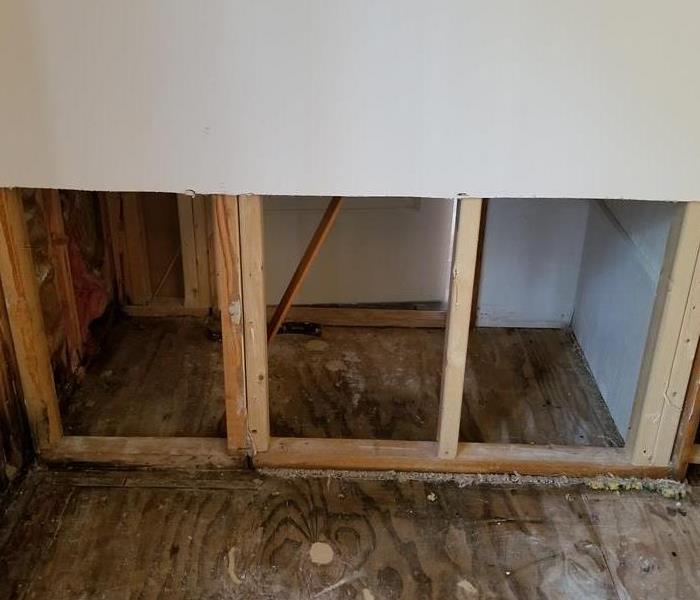Water-Damaged Drywall: Addressing Structural Damage
10/18/2023 (Permalink)
 When water damage leaves behind drywall damage, we use flood cuts to dry and restore your property properly.
When water damage leaves behind drywall damage, we use flood cuts to dry and restore your property properly.
Water damage is a common problem in homes, and one of the areas that often suffer the most is drywall. When drywall gets wet, it can quickly become weakened, damaged, and pose structural risks. In this blog post, we will discuss the steps you can take to address water-damaged drywall and prevent further structural issues in your home.
Assess the Damage
Safety first! Before assessing the damage, ensure the space is safe to enter. Turn off power in affected areas and wear appropriate protective gear such as gloves, goggles, and a mask.
Determine the extent of the damage by checking for signs of swelling, discoloration, sagging, or crumbling of drywall. These indicate that the drywall has absorbed water and may be structurally compromised. Using a utility knife, carefully cut along the damaged areas, creating a clean edge. Remove the wet drywall sections, making sure to dispose of them properly. Check for signs of insulation damage or mold growth. If found, address these issues as well.
Dry Out the Area
Remove moisture by using fans, dehumidifiers, and open windows to promote air circulation and expedite drying. It is important to thoroughly dry the affected area before proceeding with repairs to prevent mold growth and further damage. Treat the areas affected by mold or mildew. Look for signs of mold or mildew on adjacent surfaces and materials. If mold is present, clean the area with a mixture of water and mild detergent. Then, use a mold treatment solution following the manufacturer's instructions to prevent regrowth.
Repair and Restore
Reinforce the structure. If the drywall behind the removed section is weakened, consider reinforcing it with additional support, such as braces or studs. Cut and install new drywall pieces to fit the area. Make sure to secure them properly, ensuring a smooth and even surface. Apply drywall joint compound and tape to seamlessly blend the new drywall with the existing walls. Sand and prime the repaired area before painting.
Address the Underlying Cause
Identify the source. Determine the cause of the water damage, whether it's a leaking pipe, roof issue, or compromised foundation. Fixing the source is essential to preventing further water damage and structural issues in the future. Seek professional assistance. If the water damage is extensive, the structure is severely compromised, or you are unsure about the repairs, it is wise to consult a professional water damage restoration or construction company.
If the damage is significant, document the repairs and consult with your insurance provider to assess whether your policy covers the necessary repairs.
Water-damaged drywall can lead to serious structural issues if not properly addressed. By promptly assessing the damage, removing wet drywall, drying the area, treating for mold, repairing and restoring, addressing the underlying cause, and seeking professional assistance when necessary, you can effectively manage water damage and maintain the structural integrity of your home. Remember, swift action is key to minimizing long-term complications and creating a safe and secure living environment for you and your family.




 24/7 Emergency Service
24/7 Emergency Service